The weeks have passed so quickly here at the Conservation department that it came as a surprise that the end of my placement is imminent.
Work on the “Shark” model has quickened, with cleaning of old adhesives from the main and detached parts a priority. Thankfully most of the adhesive used was animal or “scotch” glue, easily removed using simply water and a little gentle heat usually from a close light source, or even from (gloved) fingers.
Replacement glue was obtained and trialled (important that it is conservation grade – i.e. easily reversible) with differing types and strengths. It was decided to use animal glue again – it’s very strong if used correctly, but it’s applied hot and cools rapidly, so correct positioning of parts is crucial.
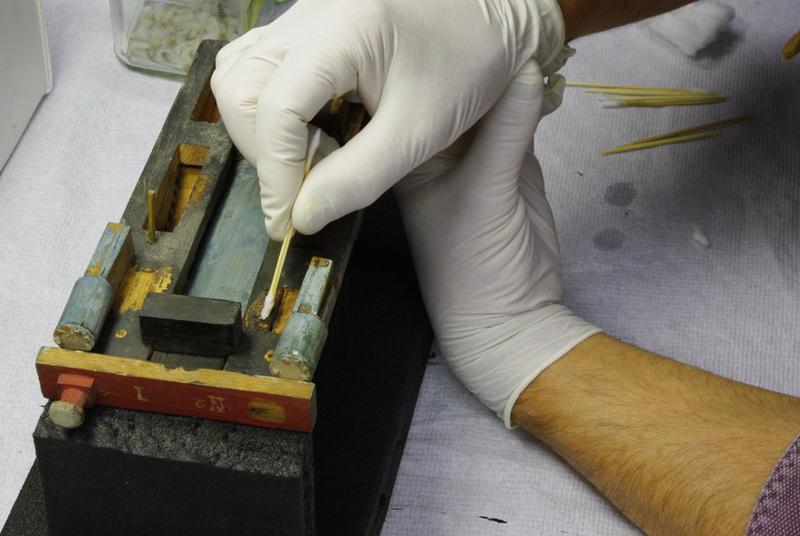
Replacement parts for the missing items were made from suitable wood with discrete labels applied to allow for later identification of new parts.
The parts were assembled without glue in a dry run, to ensure that the positions were correct. They were then colour matched to be slightly different to the original, assisting identification. Other areas where there was damage due to paint loss or very friable decoration were consolidated and then colour matched. Damage caused by wood splitting was rectified. Finally, the new and old parts were assembled and fitted using animal glue until, for the first time for many years, “Shark” appeared as a whole model.
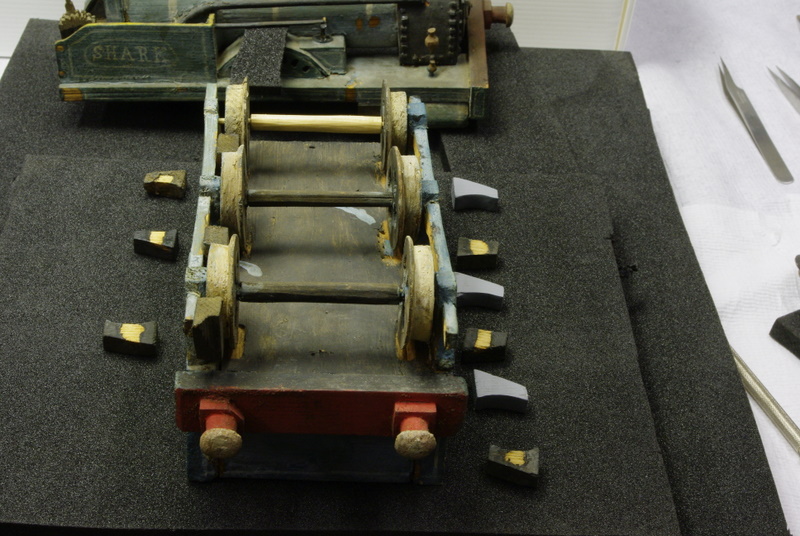

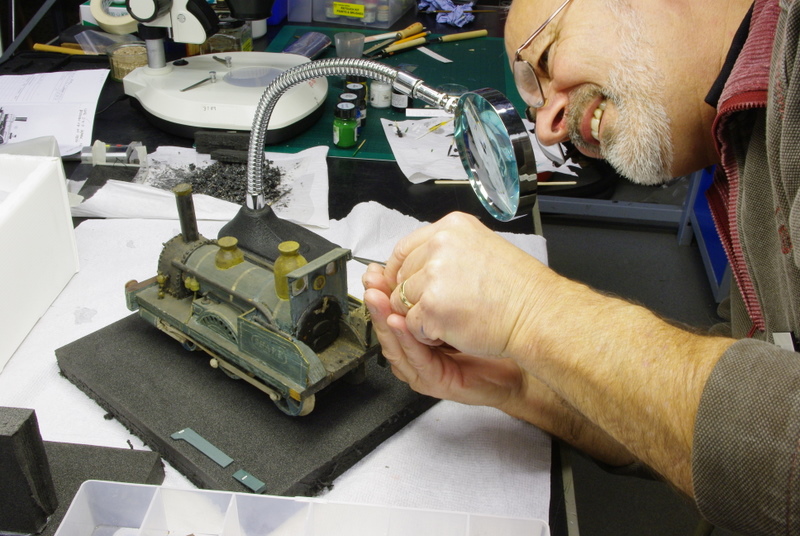
The problem with what to do with one or two loose items which it wasn’t possible to locate with any confidence was solved by packaging them and placing under a new removable section of “coal”. A plinth was made, the track sections assembled and “Shark” positioned.

One of the major issues with any conservation task is the ethical question of how much to restore or clean an object. With “Shark”, full consideration of this was documented in a conservation plan and agreed with Stathis prior to commencing any work.
It was agreed that there would be minimal intervention, that loose parts would be re-installed, and missing parts made. Friable surfaces would be consolidated, and paint loss replaced with acrylic paint. Cleaning would be dry only to avoid removing the patina of possibly 100 – 150 years age. All work would be reversible.
One of the most interesting parts of the work on restoring and conserving “Shark” has been thinking about the original maker. Due to time constraints very little research was carried out apart from what was in front of me. There is probably a lot more research to be done. The original workmanship, while appearing somewhat crude, was done with great care and accuracy, probably by a railway worker in the mid 19th century. They probably worked with no electric light and certainly no power tools, but with a good understanding of the original locomotive and its working parts. Why was it modelled? Who modelled it? Where did they live? How old were they? Were they a driver or fireman of “Shark”?
Probably the only thing I can be certain of is that “Shark” was not used as a maker’s sales model, as these were made from metal, usually in the factory and to engineering drawings and standards. The same would be true if it was made by apprentices as a test piece, or a trophy for the boardroom. It wasn’t a toy, and is fairly delicate and rested on only a short piece of display track. “Shark” must have been made by a person wanting to keep the memory of the locomotive alive, for themselves or their family. Someone experiencing the industrial revolution in its heyday, but probably living in conditions that today many would think of as poverty, working extraordinarily long hours with little or no chance for leisure pursuits.
I have not yet found another model of this type, and I am sure the museum would welcome any comments or additional information to add to our knowledge of a charming object, full of social history.

By necessity, work on “Shark” has had to take priority, but I have had the opportunity to carry out other interesting work during my short time at York, gaining an understanding of conservation of large and small objects in a national collection. The work has ranged from assisting with the return of advertising posters from an exhibition, to joining the team cleaning the frames and wheels of “Green Arrow” after its return from Locomotion, prior to display in the Great Hall.
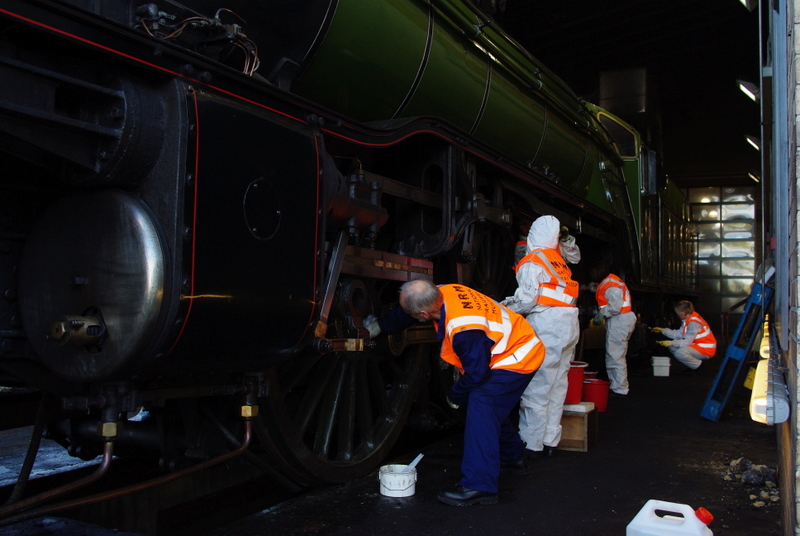
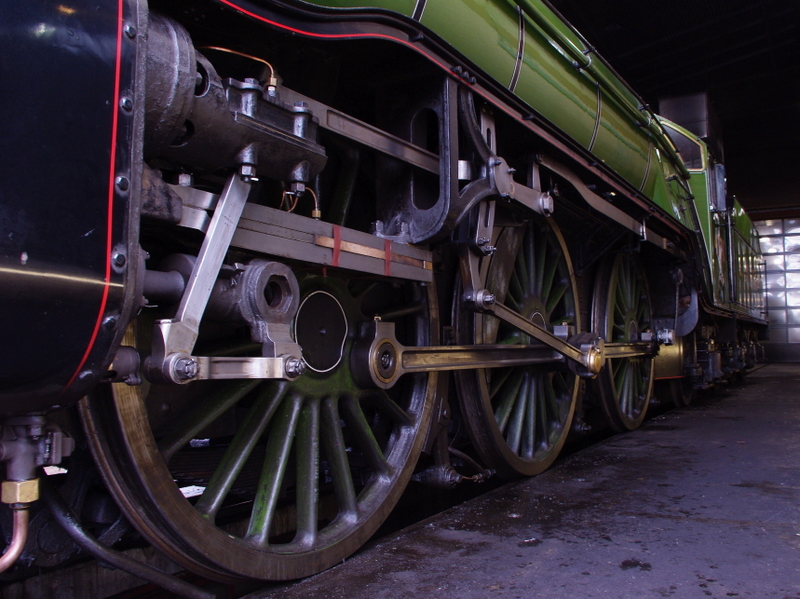
Finally I’d like to thank Stathis and his hard working team and the many others too numerous to mention who have been very willing to assist and help, encouraging me and showing great patience. It has been an experience I will not forget.
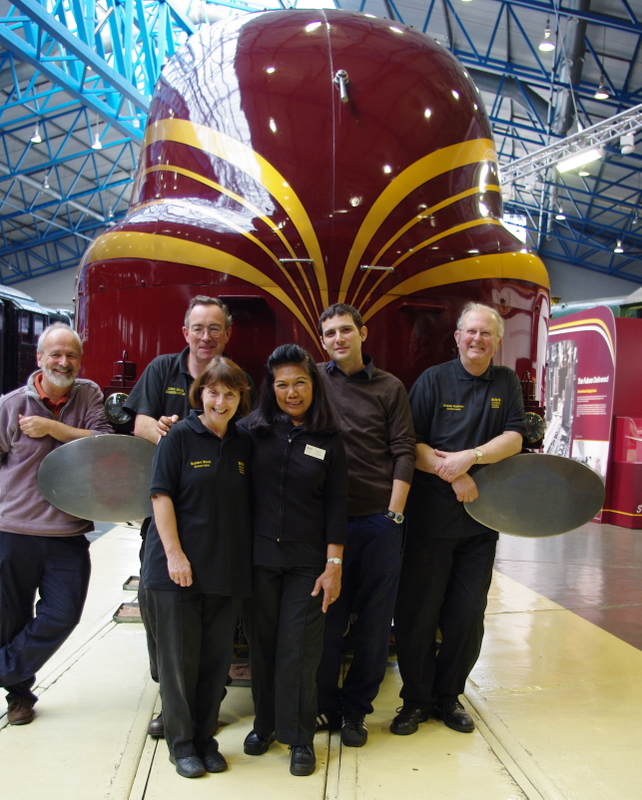
This is a guest post by Robin Gibson, who undertook a placement with the Conservation team.
An article of much use & value as I have just aquired a 4mm scale model of the locomotive in this article, and have been unable to locate definative information as to the history, my model is in white metal so a kit must have been produced by a manufacturer, it is motorised the paint however appears to be of a lighter green shade.